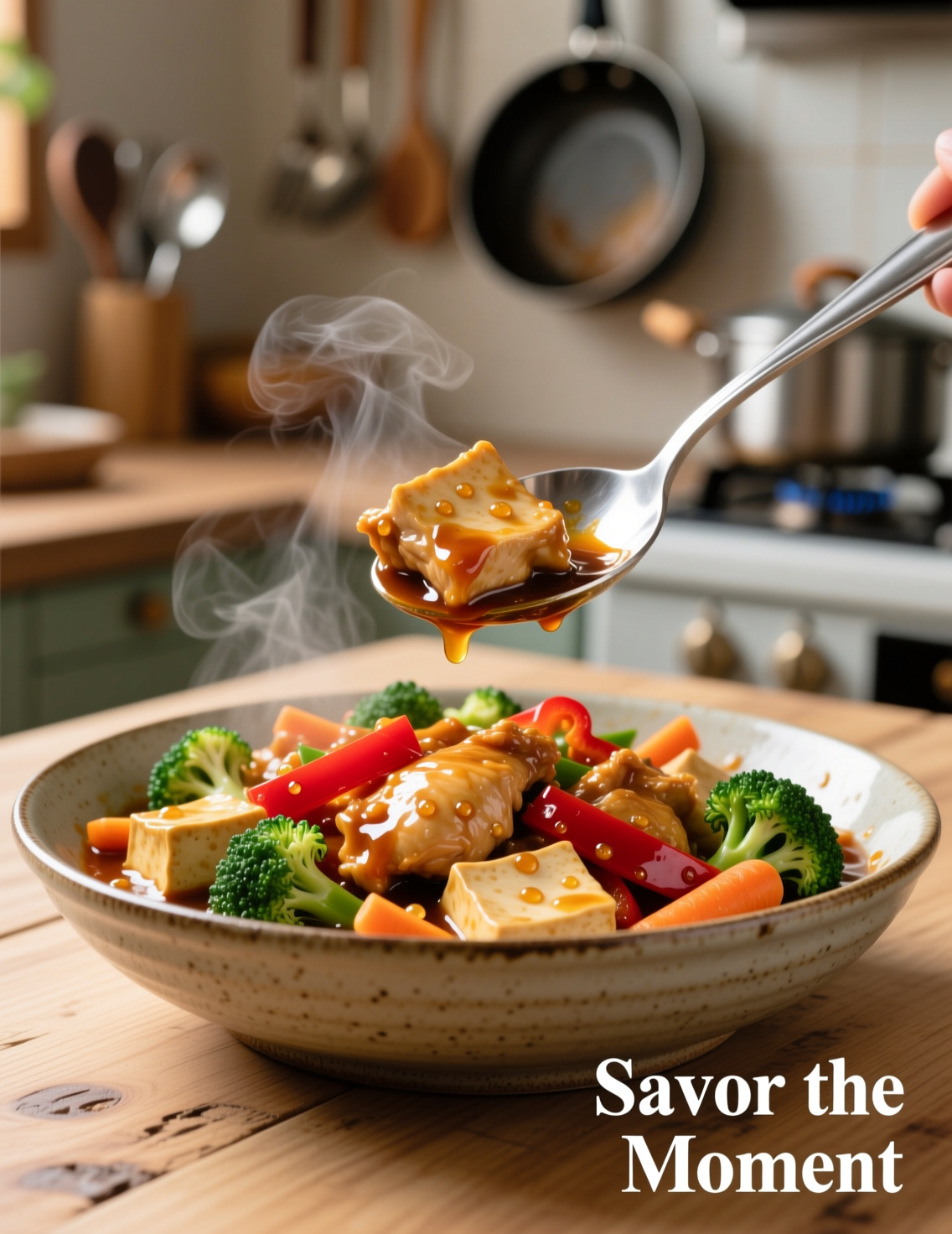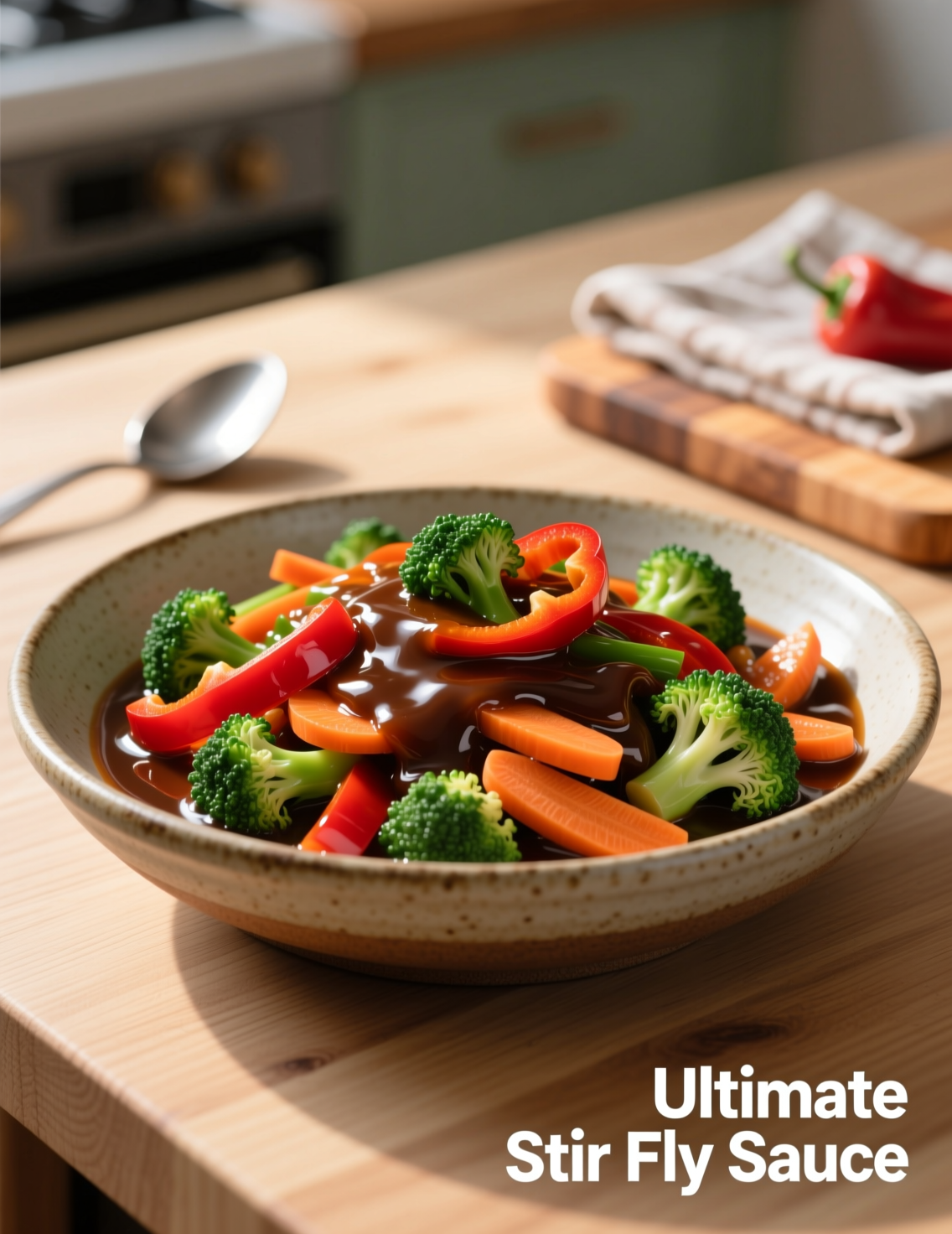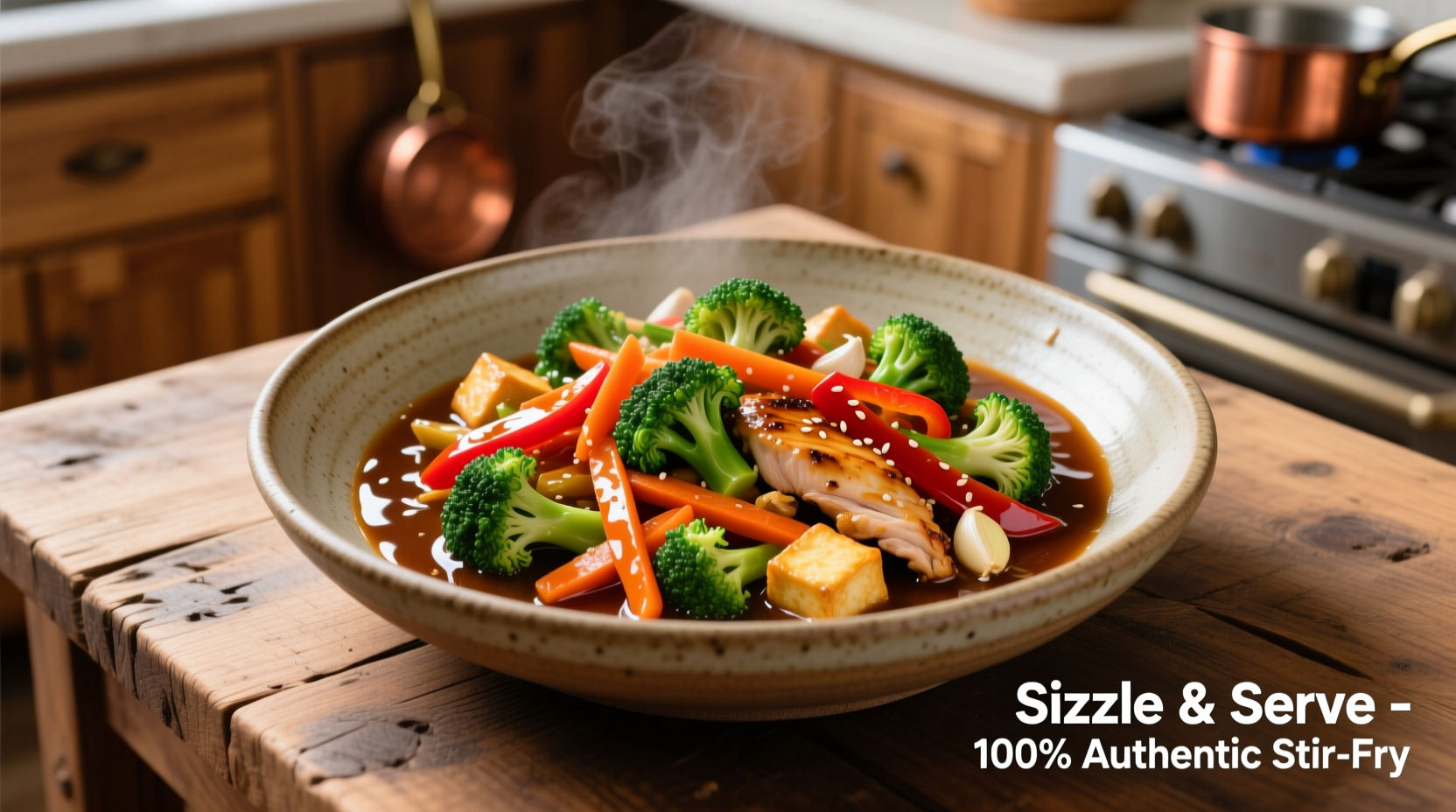Stir fry sauces—they’re the unsung heroes of the wok. They transform a medley of vegetables and proteins into a harmonious symphony of flavors. But not all sauces are created equal. The best stir fry sauce is a delicate balance of salty, sweet, savory, and umami notes, with a hint of acidity to brighten the dish.
The Foundation: Soy Sauce
At the heart of any great stir fry sauce is soy sauce. Opt for low-sodium soy sauce to control the saltiness of your dish. This allows the other flavors to shine without being overpowered. For a deeper color and richer flavor, consider using dark soy sauce. It’s aged longer and has a slightly sweeter taste, making it ideal for dishes that require a more robust flavor profile. Wikipedia
Sweetness: Balancing the Salt
Sweetness in a stir fry sauce isn’t just about sugar. Honey, brown sugar, or even maple syrup can add complexity and depth. These natural sweeteners bring a subtle richness that refined sugars can’t match. Adjust the sweetness to your preference, but remember, the goal is balance—not dessert.
Acidity: A Touch of Vinegar
Acidity brightens the sauce and balances the richness. Rice vinegar is a common choice, offering a mild tanginess that complements the other ingredients. For a more pronounced acidity, you might use lime juice or even a splash of apple cider vinegar. The key is to add just enough to cut through the richness without overwhelming the dish.
Aromatics: Garlic and Ginger
Fresh garlic and ginger are essential for that aromatic base. Garlic provides a pungent, savory depth, while ginger adds a warm, peppery note. Together, they create a fragrant foundation that enhances the overall flavor profile. Mince or grate them finely to ensure they integrate seamlessly into the sauce.
Sesame Oil: A Nutty Finish
Sesame oil introduces a nutty, toasted flavor that elevates the sauce. A little goes a long way—too much can dominate the dish. Use toasted sesame oil for its deep, roasted flavor, and add it at the end of cooking to preserve its aroma.

Thickening the Sauce
A well-thickened sauce clings beautifully to your stir fry ingredients. Cornstarch is the go-to thickener, but it’s crucial to dissolve it in a bit of cold water before adding it to the sauce. This prevents clumping and ensures a smooth consistency. Add the cornstarch slurry to the simmering sauce and cook until it reaches your desired thickness.
Spice: Adding Heat
Heat is a personal preference. Red pepper flakes, chili paste, or a dash of sriracha can introduce varying levels of spiciness. Start with a small amount and adjust to taste. Remember, it’s easier to add more heat than to tone it down once it’s in.
Umami Boosters
To deepen the savory notes, consider adding umami-rich ingredients like oyster sauce, hoisin sauce, or fish sauce. These condiments bring a complex, savory depth that enhances the overall flavor profile. Use them sparingly, as they can be quite potent.
The Perfect Stir Fry Sauce Recipe
Here’s a tried-and-true recipe that balances all these elements:
Ingredients:
- ½ cup low-sodium soy sauce
- 2 tablespoons honey or brown sugar
- 1 tablespoon rice vinegar
- 2 cloves garlic, minced
- 1 tablespoon fresh ginger, grated
- 1 teaspoon toasted sesame oil
- 1 tablespoon cornstarch
- ¼ cup cold water
- Optional: 1 teaspoon red pepper flakes
- Optional: 1 tablespoon oyster sauce
Instructions:
- In a bowl, whisk together the soy sauce, honey, rice vinegar, garlic, ginger, and oyster sauce (if using).
- In a separate small bowl, dissolve the cornstarch in cold water to create a slurry.
- Add the cornstarch mixture to the sauce and stir to combine.
- Heat the sauce in a saucepan over medium heat, stirring constantly until it thickens to your desired consistency.
- Remove from heat and stir in the sesame oil and red pepper flakes, if using.
- Allow the sauce to cool slightly before using it in your stir fry.
Tips for the Best Stir Fry
- Prep Ingredients First: Stir frying is quick. Have all your ingredients chopped and ready to go before you start cooking.
- High Heat Cooking: Use a wok or a large skillet over high heat to achieve that signature sear.
- Don’t Overcrowd the Pan: Cook in batches if necessary to ensure even cooking and browning.
- Add Sauce at the Right Time: Add your sauce towards the end of cooking to prevent burning and to allow the flavors to meld.
- Garnish for Freshness: Top your dish with fresh herbs, sliced green onions, or a sprinkle of sesame seeds for added flavor and texture.
Common Mistakes to Avoid
- Using Regular Soy Sauce: Regular soy sauce can make your dish too salty. Opt for low-sodium versions to control the saltiness.
- Skipping the Cornstarch Slurry: Adding cornstarch directly to the hot sauce can cause clumping. Always dissolve it in cold water first.
- Overcooking the Sauce: Cooking the sauce for too long can cause it to become too thick or burn. Cook just until it reaches your desired consistency.
- Ignoring Acidity: Acidity balances the richness of the sauce. Don’t skip the vinegar or citrus juice.
- Overusing Sweeteners: Too much sugar can make your sauce cloying. Use sweeteners sparingly and adjust to taste.

Variations to Explore
- Spicy Szechuan Style: Add a tablespoon of chili bean paste and a handful of Szechuan peppercorns for a numbing, spicy kick.
- Thai-Inspired: Incorporate fish sauce, lime juice, and a touch of palm sugar for a tangy, savory flavor.
- Sweet and Sour: Mix in pineapple juice and vinegar for a classic sweet and sour profile.
- Miso-Based: Use white or red miso paste as the base for a rich, umami-packed sauce.
Conclusion
Mastering the art of stir fry sauce is about understanding the balance of flavors and knowing how to adjust them to suit your taste. With this foundational recipe and tips, you’re equipped to create a stir fry sauce that elevates any dish. Experiment with variations and find the perfect combination that delights your palate. Remember, the best stir fry sauce is one that complements your ingredients and enhances the overall dining experience.
FAQs
What is the key ingredient in the best stir fry sauce?
Soy sauce forms the savory base and balances other flavors.
Can I use regular soy sauce instead of low-sodium?
You can, but it may make the sauce too salty.
How do I thicken stir fry sauce properly?
Dissolve cornstarch in cold water before adding to prevent clumps.
Should I add garlic and ginger raw or cooked?
Add minced garlic and grated ginger to the sauce; they cook quickly in stir fry.
When should I add sesame oil?
Add sesame oil at the end to preserve its nutty aroma.
Can I make the sauce spicy?
Yes, add red pepper flakes, chili paste, or sriracha to taste.
What’s a good sweetener for stir fry sauce?
Honey, brown sugar, or maple syrup works well for depth and balance.
Can I store stir fry sauce?
Yes, it keeps in the fridge for up to a week in an airtight container.
How much vinegar should I use?
Just enough to brighten flavors—usually about 1 tablespoon per ½ cup soy sauce.
Can I customize the sauce for different cuisines?
Absolutely—use ingredients like miso, lime, or chili paste for Thai, Szechuan, or miso-style variations.

Mariana is a passionate home cook who creates delicious, easy-to-follow recipes for busy people. From energizing breakfasts to satisfying dinners and indulgent desserts, her dishes are designed to fuel both your body and hustle.
When she’s not in the kitchen, she’s exploring new flavors and dreaming up her next recipe to share with the Foodie Hustle community.

